#DCtoDCConverter
Explore tagged Tumblr posts
Text
DC-to-DC converters and their Types

Introduction
In the rapidly changing electronics industry, where dependability, energy efficiency, and downsizing are critical factors, DC-to-DC converters have become essential parts. The foundation of contemporary commercial, industrial, and consumer electronic systems is made up of these converters. They guarantee that electrical devices run at the ideal voltage and current levels, whether in renewable energy installations, electric cars, or medical equipment.
We at Dorleco recognize the value of effective power management solutions. The basic ideas of DC-to-DC converters, their various varieties, and how to select the best one for your needs will all be covered in this blog. With this information, you’ll be able to make wise choices that maximize the dependability and performance of your system.
1.What is a converter that converts DC to DC?

An electronic circuit that changes the level of direct current (DC) voltage is called a DC-to-DC converter. DC-to-DC converters use switching regulators to achieve voltage regulation, usually without the usage of large transformers, in contrast to AC transformers, which run on alternating current.
Regardless of variations or variations in the power source, the primary purpose of these converters is to guarantee that devices receive the appropriate voltage level. This is crucial for preserving the converter’s and the linked electronic components’ longevity, effectiveness, and safety.
2.Why Do We Need DC-to-DC Converters?
DC-to-DC converters are important because they can:
Optimize Power Efficiency: By balancing the supply and demand of voltage, power losses can be minimized.
Stabilize Voltage Levels: Guard against voltage swings that could harm delicate electronics.
Increase System Flexibility: Make it possible for a variety of parts to run off of a single power source.
Reduce Heat Generation: Excess heat is reduced via high-efficiency conversion, which eliminates the need for large cooling systems.
Increase Battery Life: Especially helpful for battery-powered devices like mobile robotics, drones, and EVs.
These advantages directly translate into reduced operating costs and improved system reliability for companies that depend on automation, renewable energy, or smart electronics.
3. DC-to-DC Converter Types
To make sure your design satisfies performance requirements, it is crucial to comprehend the distinctions between the primary kinds of DC-to-DC converters. The three main categories are:
A. Step-Down Converter, or Buck Converter
Function: Lowers an output voltage by reducing a greater input voltage.
Principle of Operation:
uses an inductor, diode, and high-speed switching element.
Energy is stored when the switch is closed because current passes through the inductor.
The inductor’s stored energy is released to the load at a lower voltage when the switch opens.
Uses:
Systems for industrial automation
Circuits for LED lighting
EV auxiliary systems (e.g., 12V subsystems powered by a 48V battery)
Benefits:
High effectiveness (up to 95 percent)
Low production of heat
Simple and dependable circuit design
B. Step-Up Converter (Boost Converter)
A lower input voltage is raised to a greater output voltage using this function.
Principle of Operation:
The inductor stores energy when the switch is closed.
A diode that has a greater voltage than the input transfers energy to the load when the switch is opened.
Uses:
Devices that run on batteries (such as 3.7V lithium-ion batteries that can be increased to 5V)
Renewable energy systems (such as increasing the production of solar panels)
RF and communication systems
Benefits:
permits low-voltage sources to power high-voltage devices.
Effective power transmission in low-voltage settings
C. Step-Up/Step-Down Converter, or Buck-Boost Converter
Function: Depending on the needs, the input voltage can be increased or decreased.
Principle of Operation:
Uses an inductor to store energy during the switches on phase and release it at a variable voltage during its off phase.
Depending on the application, it is possible for the input and output voltages to differ.
Uses:
Electronics that are portable
Systems for cars with variable battery voltages
Medical supplies
Benefits:
Adaptable in controlling voltage
Perfect for systems with fluctuating input voltages
Small and versatile
3. Selecting an Appropriate DC-to-DC Converter
Ultimately, your system’s performance, dependability, and efficiency all rely on the DC-to-DC converter you choose. Therefore, the primary considerations are as follows:
A. Requirements for Input and Load
Range of Input Voltage: Verify that the converter can manage the variations in your power supply.
Output Voltage & Current: Comply with the operating standards of your device.
B. Thermal Management and Efficiency
Therefore, to effectively minimize energy loss and consequently reduce heat output, it is crucial to select converters with high efficiency.
Because thermal performance is crucial for small systems, seek out features such as synchronous rectification or spread spectrum modulation to enhance heat management and efficiency.
C. The Form and Size Factor
Modern electronic designs sometimes demand smaller, surface-mount converters due to space constraints.
Additionally, assess the converter’s mechanical compatibility with your existing hardware to ensure seamless integration.
D. Aspects of the Environment
For instance, imagine operating in conditions with constant vibrations, moisture, dust, and fluctuating temperatures.
Therefore, for outdoor or industrial applications, it is important to select ruggedized converters that feature protective coatings or enclosures to ensure durability and reliable performance.
E. Security and Compliance
Additionally, ensure adherence to safety regulations such as ISO, RoHS, or UL to guarantee compliance and maintain product reliability.
Moreover, system safety relies on features such as thermal shutdown, under-voltage lockout (UVLO), and over-voltage protection (OVP) to prevent damage and ensure reliable operation.
4. DC-to-DC Converters in Real-World Applications;

Electric Vehicles (EVs)
400V or 800V traction batteries power motors in EVs, while auxiliary systems like lights and entertainment need 12V.
Buck converters securely reduce the voltage.
Systems for Solar Power
Since solar panels produce variable voltage, boost converters are essential for raising and stabilizing this voltage — especially for applications involving grid integration or battery storage.
In the realm of industrial automation, precise voltage levels are essential for control circuits and PLCs. Therefore, to maintain these levels, buck or buck-boost converters are employed, as they enhance precision and improve system uptime by ensuring consistent voltage stability.
Equipment for Telecommunication
In telecom base stations, dependable voltage management is essential; consequently, DC-to-DC converters play a crucial role by consistently powering signal processing devices.
6. The Function of Dorleco in Power Conversion Products
Our specialty at Dorleco is offering both off-the-shelf and custom DC-to-DC converters that adhere to strict industry standards. Whether you want to include power electronics into a new design or improve your current systems, we provide:
Technical Consultation: Our professionals assist you in choosing the ideal converter for your requirements.
High-Performance Products: Sturdy, effective converters for use in automotive and industrial settings.
Scalable Solutions: From applications on a single device to extensive implementation in automation systems and EVs.
Additionally, we offer CAN Keypads, VCUs, and CAN Displays — all essential parts that work well with sophisticated power regulation systems.
7. New Developments in DC-to-DC Converters

A. Management of Digital Power
Moreover, the integration of microcontrollers allows for dynamic performance adjustments in DC converters, enabling greater adaptability and control.
B. Silicon carbide (SiC) and gallium nitride (GaN)
As a result of their improved thermal performance and faster switching speed, these materials enable the development of smaller and more efficient converters.
C. Energy Harvesting
IoT devices may now operate continuously on ambient energy sources including heat, vibration, and light thanks to ultra-low power converters.
Conclusion
Building dependable, effective electronic systems requires an understanding of the types and functions of DC-to-DC converters. Converters that are buck, boost, or buck-boost each have certain benefits and are appropriate for particular uses. When choosing the best converter, you must carefully take into account voltage levels, system requirements, efficiency requirements, and environmental factors.
Our goal at Dorleco is to assist you in achieving power system excellence. We offer the resources and know-how you require, whether you’re an engineer developing the next electric vehicle or a site manager modernizing industrial controls.
Explore our diverse selection of products and technical resources to enhance the robustness, efficiency, and intelligence of your power solutions. Whether you’re aiming to improve system reliability, boost performance, or integrate smarter technologies, we design our offerings to meet your evolving needs.
Get in touch with us at [email protected] right now to order VCUs, CAN Keypads, CAN Displays, and more, or to discuss your application.
Entrust your inventions to Dorleco’s dependable and effective power.
#PowerManagement#DCtoDCConverter#ElectricVehicles#IndustrialAutomation#RenewableEnergy#Dorleco#SmartPower#Efficiency#TechInnovation
0 notes
Text
𝐆-𝐄𝐧𝐞𝐫𝐠𝐲 𝟏𝟓-𝟓𝟎𝐕 𝐭𝐨 𝟏𝟐𝐕 𝟐𝐀 𝟐𝟒𝐖 𝐃𝐂 𝐭𝐨 𝐃𝐂 𝐁𝐮𝐜𝐤-𝐁𝐨𝐨𝐬𝐭 𝐂𝐨𝐧𝐯𝐞𝐫𝐭𝐞𝐫 𝐒𝐭𝐞𝐩-𝐔𝐩 & 𝐃𝐨𝐰𝐧 𝐌𝐨𝐝𝐮𝐥𝐞 𝐈𝐏𝟔𝟖
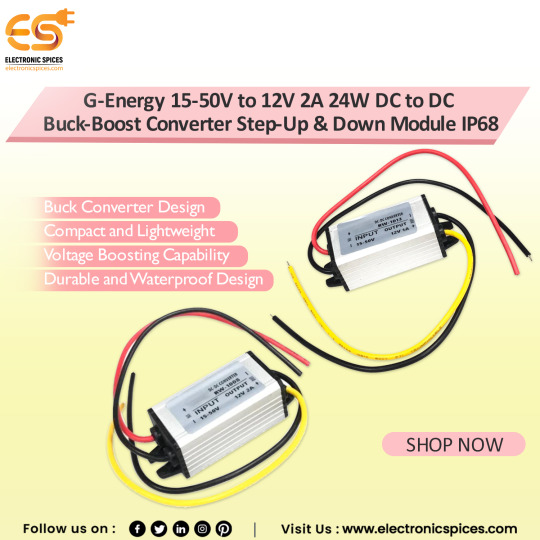
The G-Energy 15-50V to 12V 2A 24W DC-DC Buck-Boost Converter is a cutting-edge power module that offers a perfect blend of versatility, efficiency, and durability. This makes it an indispensable component for a wide range of applications demanding a stable 12V output, even in the face of fluctuating input voltages. Whether you're powering off-grid solar systems, automotive electronics, communication devices, or low-power 12V devices, this converter is designed to meet your power conversion needs with utmost efficiency.
Key Features and Benefits :
Wide Input Voltage Range: One of the most significant advantages of the G-Energy Buck-Boost Converter is its exceptionally wide input voltage range, spanning from 15V to 50V. This flexibility ensures its compatibility with various applications where input voltages within this range are prevalent, such as automotive, solar, and industrial environments. The ability to handle such a broad input voltage range is especially beneficial for off-grid solar power systems, where solar panel voltage can fluctuate based on factors like time of day, weather conditions, and load demands.
Dual-Function Capability (Boost and Buck): The G-Energy 15-50V converter is a versatile device capable of performing both step-up (boost) and step-down (buck) voltage conversion. This means it can either increase or decrease the input voltage to deliver a constant 12V output, as required.
Boost Mode: If the input voltage is below 12V, the converter will boost it to the desired 12V level.
Buck Mode: If the input voltage exceeds 12V, the converter will buck it down to the required 12V output.
High Efficiency: The G-Energy converter is engineered to deliver high efficiency, ensuring minimal power loss during the conversion process. This translates to lower heat dissipation and improved overall system performance.
Compact and Durable Design: The compact and robust design of the G-Energy converter makes it easy to integrate into various applications. Its durable construction ensures long-lasting performance, even in harsh operating conditions.
Applications :
Off-Grid Solar Power Systems: Powering 12V devices like LED lights, fans, and small appliances.
Automotive Electronics: Providing stable 12V power to car accessories and electronics.
Communication Devices: Powering routers, modems, and other communication equipment.
Industrial Automation: Powering sensors, actuators, and control systems.
Battery Charging: Charging 12V batteries from various input voltage sources.
#Electronicspices#GEnergyConverter#DCtoDCConverter#BuckBoostConverter#StepUpDownModule#IP68Converter#24WPowerConverter#EnergyEfficiency
0 notes
Text
PT79SR152H
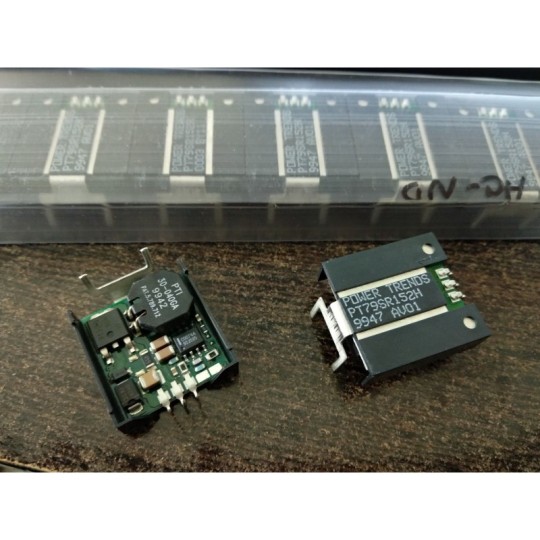
POWER TRENDS PT79SR152H Non-Isolated DC/DC Converter
For more details visit www.adatronix.com
0 notes
Link
Please watch: "LED chaser using transistor BC547 || 2 transistor LED blinking" https://www.youtube.com/watch?v=pWTy77lQzMA --~-- diy 3.7v to 40v volt boost converter !! DC TO DC converter 3.7v to 40v led driver ne555 3.7v থেকে 40v ভোল্টের বুস্ট কনভার্টার ডায়ি 3.7v to 40v volt boost converter DC TO DC converter ! 3.7v to 40v led driver #3.7vto40v #voltboostconverter #dctodcconverter 1 mosfet irf 3205 2 104pf 3 diode 4 capacitor 220UF 160V 5 VR10K 6 IC NE555 7 copper coil 8 pcb Electronics BD circuit projects,circuit board,science project,school project,do it yourself projects,boost converter,simple boost converter,simple boost converter 555,boost converter circuit using 555,boost converter circuit diagram,voltage booster circuit,voltage booster,voltage booster dc,voltage booster circuit diagram,voltage amplifier circuit diagram,voltage,diy,voltage amplifier circuit,boost converter circuit,voltage multiplier,dc to dc converter How to Make 3.7v to 5v Converter Circuit-_- Dc to Dc Convent 3.7v Li-Ion 18650 Battery charger using LM2596 DC-DC buck converter | single battery How to make 3.7v to 5v Converter circuit | DC To DC Boost Converter. DIY 3v To 12v Boost Converter Circuit | DC To DC Converter How to make 3.7v to 5v Converter circuit | DC To DC Boost Converter. Dc to dc boost converter 4v dc to 140v dc My testing booster 3.7V to 12V-13.7V DC converter facebook https://www.facebook.com/md.hridoykhan.353803 twitter https://twitter.com/mdnasir72351844 in https://www.linkedin.com/feed/?trk=onboarding-landing instagram https://www.instagram.com/mdnasir8748/ led chaser https://www.youtube.com/watch?v=pWTy77lQzMA&t=16s vumeter https://www.youtube.com/watch?v=wzbD_bYj1Hg
1 note
·
View note
Text
𝐗𝐋𝟔𝟎𝟎𝟗 𝐋𝐌𝟐𝟓𝟗𝟔𝐒 𝐃𝐂-𝐃𝐂 𝐒𝐭𝐞𝐩 𝐔𝐩 𝐃𝐨𝐰𝐧 𝐁𝐨𝐨𝐬𝐭 𝐁𝐮𝐜𝐤 𝐕𝐨𝐥𝐭𝐚𝐠𝐞 𝐏𝐨𝐰𝐞𝐫 𝐂𝐨𝐧𝐯𝐞𝐫𝐭𝐞𝐫 𝐌𝐨𝐝𝐮𝐥𝐞
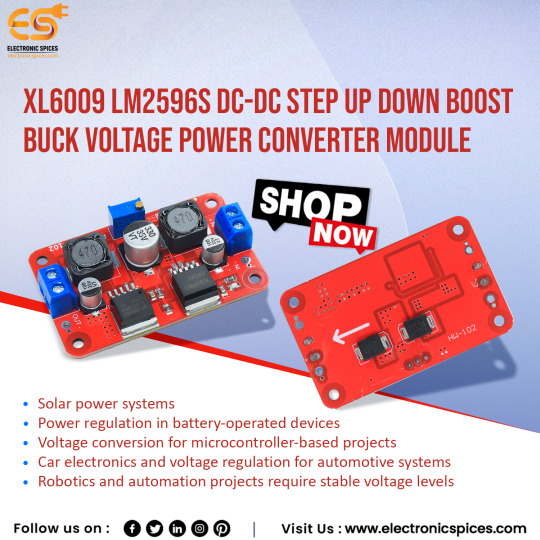
Specification :-
Input: 3.5-28V
Output: 1.25V-26V
Maximum Input Current: 3A
Maximum Output: 3A
Rated Input: 1A, Output: 1A
Size: 60mm x 37mm
The XL6009 LM2596S DC-DC Step Up Down Boost Buck Voltage Power Converter Module is a versatile and efficient power regulation module that can both step up (boost) and down (buck) input voltage to deliver a stable output. Equipped with the XL6009 and LM2596S chipsets, this converter module allows for wide input voltage ranges and precise output voltage control, making it ideal for various electronic applications requiring different voltage levels. The module operates efficiently in both buck (step-down) and boost (step-up) modes, supporting input voltages typically ranging from 3V to 40V. It can output a regulated voltage anywhere from 1.25V to 35V, depending on the application needs. The built-in potentiometer allows users to adjust the output voltage easily. Additionally, its high conversion efficiency reduces energy loss, and the module is equipped with thermal and short-circuit protection for reliability and safety.
Applications :-
Power regulation in battery-operated devices.
Voltage conversion for microcontroller-based projects.
Solar power systems.
Car electronics and voltage regulation for automotive systems.
Robotics and automation projects require stable voltage levels.
XL6009 LM2596S DC-DC Step Up Down Boost Buck Voltage Power Converter Module
Product Description :
The XL6009 LM2596S DC-DC Step Up Down Boost Buck Voltage Power Converter Module is a versatile and efficient power regulation solution capable of both boosting and bucking input voltage to deliver a stable output. Powered by the XL6009 and LM2596S chipsets, this module offers wide input voltage compatibility and precise output voltage control, making it suitable for a broad range of electronic applications.
Key Features :
Bi-directional voltage conversion: Can step up or step down voltage.
Wide input voltage range: Typically operates from 3V to 40V.
Adjustable output voltage: Potentiometer allows for easy output voltage adjustment.
High conversion efficiency: Minimizes power loss and improves overall efficiency.
Thermal and short-circuit protection: Ensures reliability and safety.
Applications :
Battery-powered devices : Provides stable power supply for devices like smartphones, tablets, and portable speakers.
Microcontroller-based projects : Offers a reliable power source for various microcontroller applications.
Solar power systems : Regulates voltage from solar panels to match the requirements of connected devices.
0 notes
Text
𝟑𝟒𝟎𝟔𝟑𝐀𝐏𝐈 (𝟔𝟎𝟖𝐀𝐘) 𝐃𝐂 𝐭𝐨 𝐃𝐂 𝐜𝐨𝐧𝐯𝐞𝐫𝐭𝐨𝐫 𝐃𝐈𝐏 𝟖 𝐩𝐢𝐧 𝐈𝐂
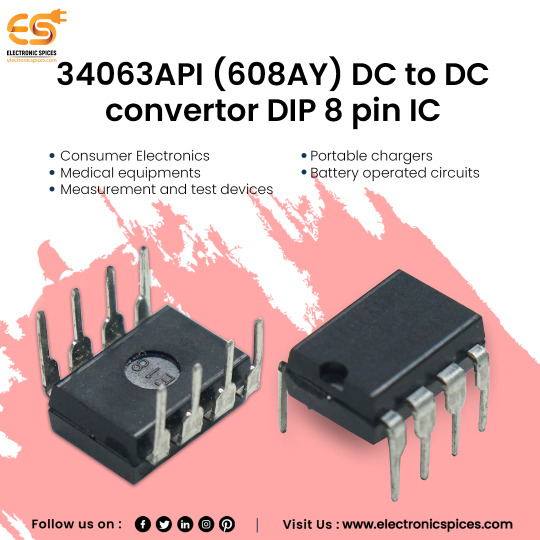
Specification :
Operation from 3.0 V to 40 V Input
Low Standby Current
Current Limiting
Output Switch Current to 1.5 A
Output Voltage Adjustable
Frequency Operation to 100 kHz
Precision 2% Reference
#Buy Now : https://electronicspices.com/product/34063api-608ay-dc-to-dc-convertor-dip-8-pin-ic#dcconverter#electronicspices#dip#Convertor#8pin#ic#convertor#electronic#Dip#electron#input#Voltage#DCtoDCconverter#stepdownconverter#stepupconverter#inverter
0 notes
Text
DC-to-DC converters and their Types
May 9, 2024
by dorleco
with no comment
Others

Introduction
The DC-to-DC converter is the fundamental component of modern commercial and industrial electronics. It is necessary to have a solid understanding of the different types of DC-to-DC converters and the features that go along with them to maximize the efficacy and stability of your system. Selecting the wrong kind of DC-to-DC converter and sacrificing dependability, performance, or efficiency is the last thing you want to happen. Dorleco is here to help you select the best DC-to-DC converter and to ease your mind. You’ll understand the differences between buck, boost, and buck-boost converters, so you can choose the appropriate one for your operation with confidence. In addition to giving you wise counsel, you can count on Dorleco to supply the excellent converters required for your operations!
DC-to-DC Converters’ Function

Before we explore the many types of DC-DC converters, let’s talk about how they work to charge your devices. These converters are designed to accept a specified DC input voltage and scale it up or down to provide a different DC output voltage based on the circumstances.
They supply the required voltage, which is the cornerstone of industrial systems ranging from production automation to renewable energy installations, enabling every piece of equipment to function at peak efficiency.
Increasing the Efficiency of Electronic Devices
Electrical equipment performance is greatly influenced by efficiency, especially in commercial and industrial settings. It takes DC-to-DC converters to achieve this efficiency to its full potential.
They reduce power loss and improve the system’s overall energy management by optimizing the voltage conversion process. For battery-operated devices, where energy conservation is crucial, this efficiency is particularly important.
One example of this would be robotics in warehouses. We cover this in more detail in our suggestions for the top robotic power supplies and the various varieties of robotic power supplies.
Longer battery life and fewer replacements are favorable for the environment and more economical when facilitated by efficient converters.
Moreover, fewer complex cooling systems are needed to handle the reduced heat produced by high-efficiency converters, which further lowers energy use. To learn more about power supply efficiency ratings and other details, check out our blog.
Providing Voltage Stability and Control
The reliability and longevity of your device depend on maintaining voltage stability. DC-to-DC converters ensure that the connected devices operate within their optimal voltage range by carefully managing the output voltage.
This regulation is necessary to protect sensitive electronic components from damage caused by voltage fluctuations. In industries where accuracy is crucial, such as medical equipment and telecommunications, this ability to produce regulated and stable voltage is crucial.
Furthermore, converters help maintain a stable operating environment and control dynamic loads in a system by rapidly altering the voltage supply to suit the demands of different components.
If you would like more details on what causes a voltage drop, visit the page we have linked to. But now, let’s discuss what first grabbed your attention: the many types of DC-to-DC converters.
Types of DC-to-DC converter

Buck Converters: Making Use of Step-Down Characteristics
Due in large part to its step-down capabilities, the buck converter is one of the most widely used types of DC-to-DC converters.
Because they efficiently convert a higher input DC voltage to a lower output voltage, they are ideal in scenarios where the power supply is higher than what the load demands. Read our article on what happens when you use a higher-voltage power supply to see why this is significant.
Buck converters are frequently used in automated equipment to modify the voltage to suit the requirements of various parts. For instance, a buck converter may be used in a system with a 24V power source to supply electricity to a 12V sensor.
Buck converters’ efficiency is their main benefit. The fact that they usually provide good energy efficiency with less heat generation is essential for lowering the cost of the operating power supply and prolonging the life of the converter and any linked devices. Buck converters are powered by a diode, an inductor, and a switch. It functions as follows:
When the switch is closed, energy is stored in the inductor.
The energy is released when the load is opened, resulting in a voltage drop.
The control of the switch regulates both the amount of energy given and the output voltage level.
Operational Step-Up Boost Converters
Boost converters, as opposed to buck converters, raise the input voltage to raise the output voltage.
They are essential when increasing the available voltage is required to meet the demands of the load. To learn more about how to tell if your power supply is too weak, visit our website.
When the battery voltage is lower than what the device needs, like in battery-powered devices, these converters come in handy. They are widely used in energy harvesting procedures, such as charging batteries or increasing the voltage of a solar panel to feed electricity into the grid.
A boost converter uses an inductor to store energy when the switch is closed and a diode to release it into the output when the switch is open to enhance the voltage.
The length of time the switch is closed or open plays a significant role in determining the voltage increase.
Which DC-to-DC Converter Type Is Ideal for Your Needs?
This list includes every type of DC-to-DC converter available. What kind of power supply am I going to need now? Because it’s crucial to the effectiveness and efficiency of your electrical systems, you shouldn’t take this lightly.
The selection is influenced by the kind of power source you select, your load’s requirements, and the specifics of your application.
Applications and Converter Types Must Match
finding out what your system needs is the easiest way to determine what kind of DC-DC converter you need. Would you like to switch one voltage from higher to lower or the other way around? Is it necessary for you to be able to accomplish both?
All that’s left to do is select the suitable DC-to-DC converter type:
1. Buck Converters for Applications Using Step-Down Buck converters are widely utilized in industrial settings where equipment needs lower voltage levels; they successfully cut voltage without compromising efficiency. They are most appropriate for applications like powering LED lighting systems or tiny motors inside larger systems that operate at higher voltages.
2. Boost Converters for Higher Needs: Particularly useful for renewable energy sources, such as solar panels or battery-operated devices, when increasing the voltage is required for optimal performance. Applications such as communication devices and distant sensors commonly use boost converters.
3. Buck-Boost Converters for Variable Voltage Sources: These converters are suitable for usage in a range of environments, such as systems with variable power sources, portable electronics, and car electronics, due to their flexibility and adaptability.
Extra Factors to Take into Account When Choosing a DC-to-DC converters

It can be challenging to sort through the many power supply certifications and topologies to get the best PSU for your needs. A few of these important elements are as follows:
Efficiency and Heat Dissipation: High efficiency is necessary to regulate system heat and minimize energy loss. It is best to use a converter with efficient heat dissipation systems, especially in small spaces or heated environments.
Input/output voltage and current requirements: Ascertain the exact voltage and current required for your application. Verify that the converter you choose can handle the required input and output parameters. You might also want to look at our guide on how to figure out a power source’s wattage.
Dimensions and Mounting Restrictions: Consider the physical space that your system provides for the converter. For seamless integration, some applications could require small or specialized form factors. If you follow our instructions for PSU sizing, you can steer clear of potential issues during PSU installation.
Environmental Aspects: Assess the working environment. Converters may have to withstand more difficult conditions in industrial settings, such as vibrations, moisture, or dust.
Safety and Regulatory Compliance: Confirm that the converter complies with all relevant industry standards and safety regulations. This is necessary to maintain operational integrity and safety. It may be necessary to use a UL-listed or class 2 power source.
Additional Elements: Seek converters with additional features like thermal shutdown, under-voltage lockout, or over-voltage protection to further boost the dependability and safety of your system.
Conclusion:
Now that we’ve covered the three main types of DC-to-DC converters, Buck, Boost, and Buck-Boost, we hope you can handle them with ease.
If you want the maximum performance out of your commercial and industrial electrical equipment, you must understand these types of DC-to-DC converters. Locating the best converter for your needs will increase the efficiency, dependability, and control of your operations.
More resources on topics such as the differences between AC and DC, whether a house runs on DC or AC, signs of a malfunctioning PSU, regulated vs. unregulated power supply, how to troubleshoot power supplies, use DC power supplies, build an AC to DC converter, replace power supplies, redundancy in power supplies, lifespan of power supplies, and more can be found in our blog.
Getting the perfect solution to your power conversion issues just requires one click. Get in contact with us or make an order with us right now for superior converter solutions tailored to your specific requirements.
Send an email to [email protected]. To overview our VCU products and services.
0 notes
Text
PT78ST109S

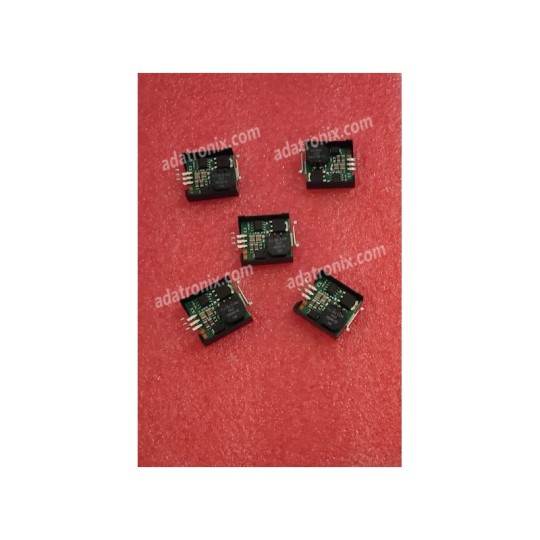
PT78ST109S POWER TRENDS DC-DC Converter 1.5 Amp Regulator
For more details visit www.adatronix.com
0 notes
Text
PT78ST115S

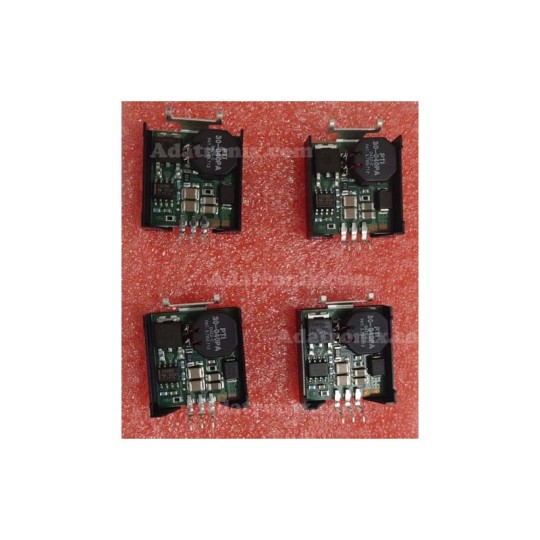
PT78ST115S POWER TRENDS DC-DC Converter
For more details visit www.adatronix.com
0 notes
Text
ATH006A0X-SRZ
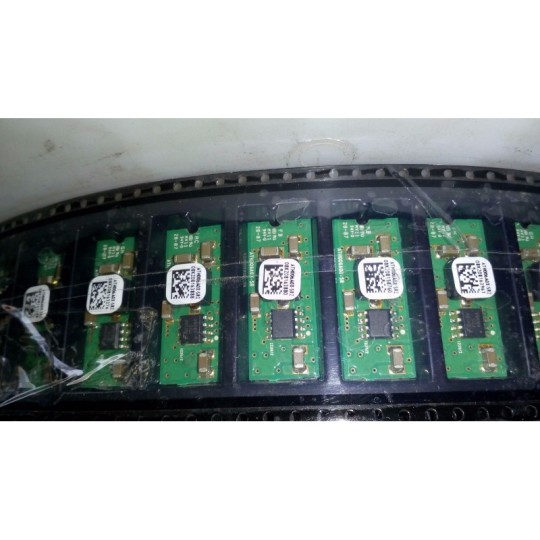
ATH006A0X-SRZ CONVER DC/DC 0.75 3.63V @ 6A SMD GE Critical
For more details visit www.adatronix.com
0 notes
Text
ATH006A0X4-SRZ


ATH006A0X4-SRZ CONVER DC/DC 0.75 3.63V @ 6A SMD GE Critical
For more details visit www.adatronix.com
0 notes
Text
ATH006A0X-SRZ
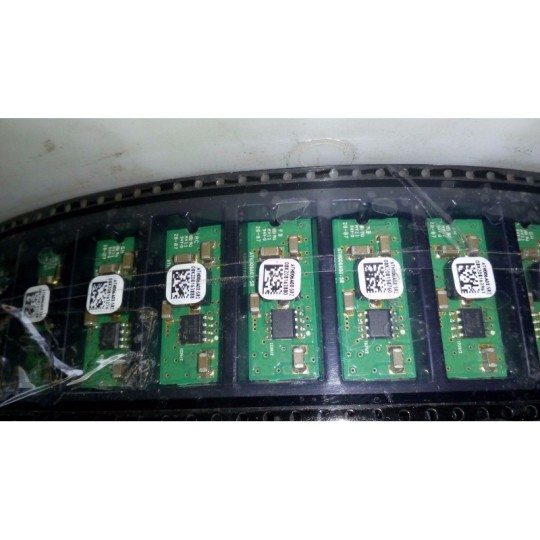
ATH006A0X-SRZ CONVER DC/DC 0.75 3.63V 6A SMD GE Critical
For more details visit www.adatronix.com
0 notes
Text
PT79SR152H
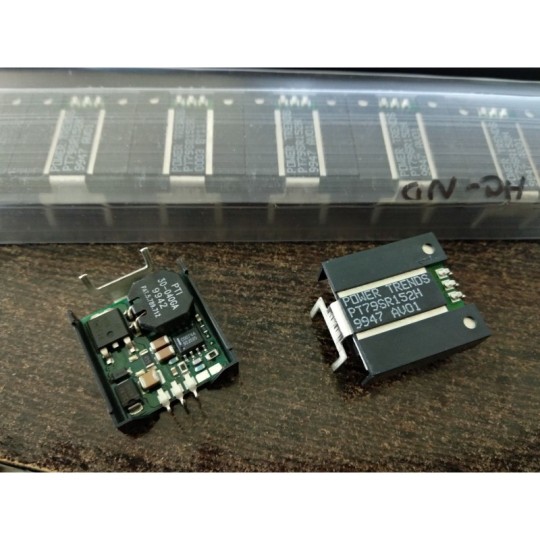
POWER TRENDS PT79SR152H Non-Isolated DC/DC Converter
For more details visit www.adatronix.com
0 notes
Text
PT78ST115S
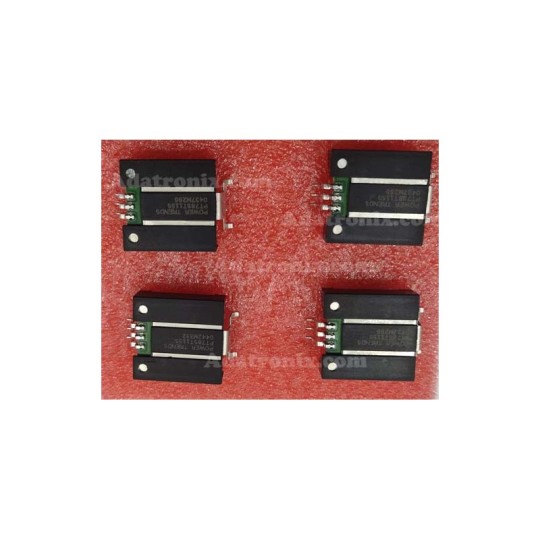
PT78ST115S POWER TRENDS DC-DC Converter
For any inquiry, email us at [email protected]
For more details visit www.adatronix.com
0 notes
Text
PT78ST133S

PT78ST133S POWER TRENDS DC-DC Converter PT78ST
For more details visit www.adatronix.com
0 notes
Text
PT78ST109S

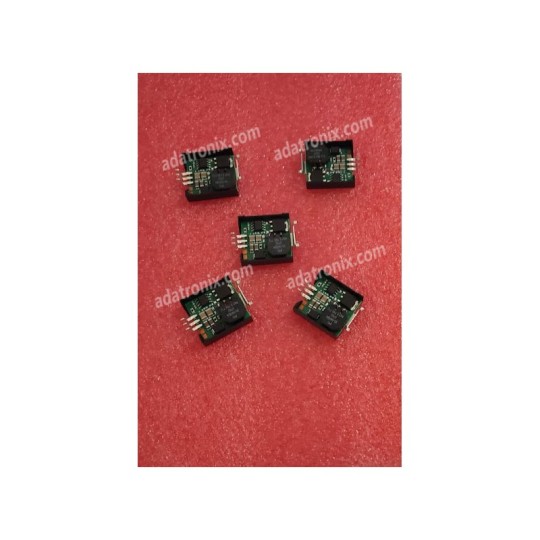
PT78ST109S POWER TRENDS DC-DC Converter 1.5 Amp Regulator
For more details visit www.adatronix.com
0 notes